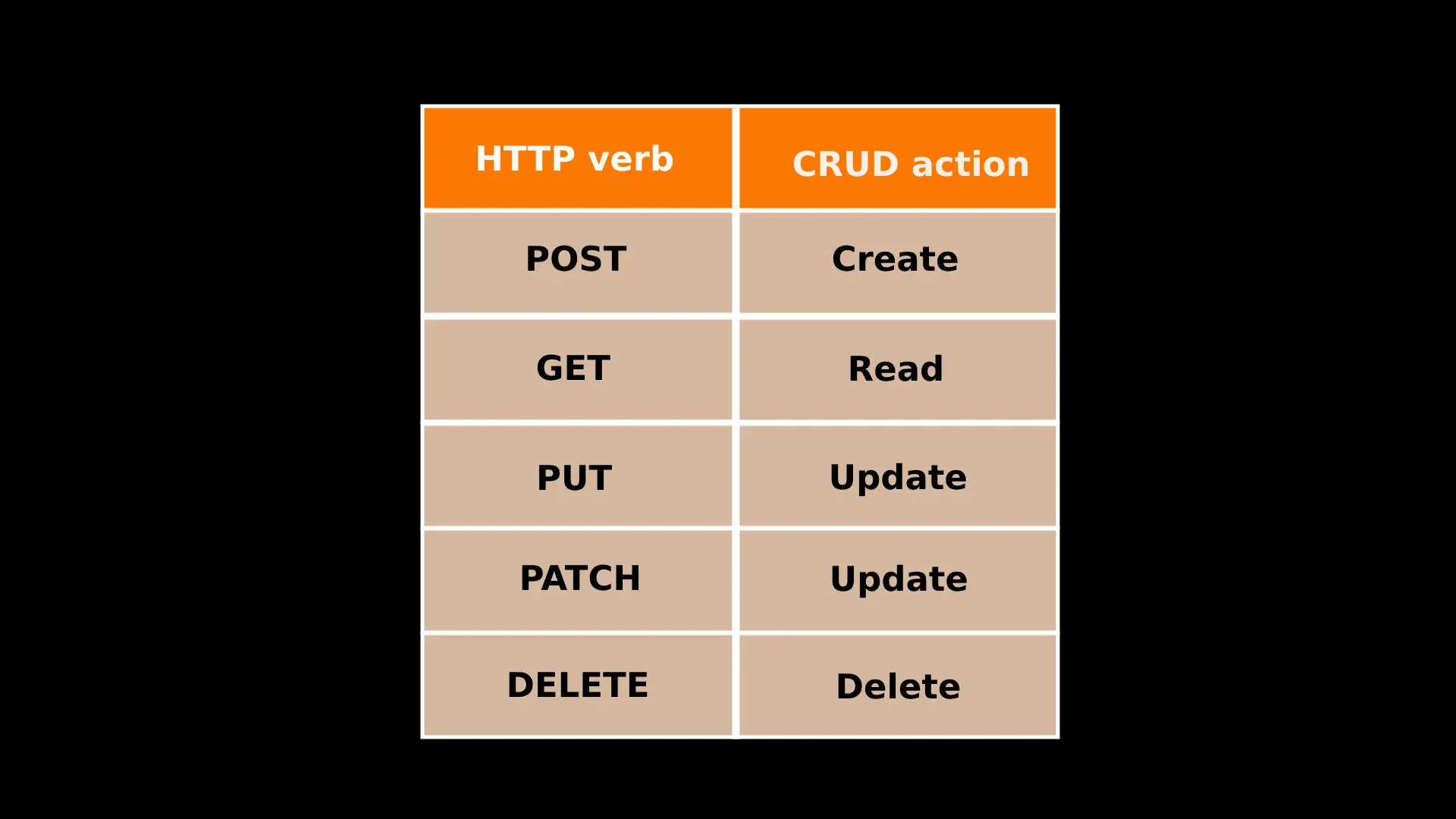REST API allows apps to communicate over the internet, making it vital to modern software development. REST APIs are a versatile and lightweight solution that adheres to the principles of representational state transfer, facilitating seamless connectivity between various components of microservices systems. Many people favor this method due to its effectiveness and accessibility. This piece will define REST APIs, describe how they work, and talk about how important they are in today’s digital world.
Table of Contents
What is a REST API?
Application Programming Interfaces (APIs) that adhere to the design principles of the representational state transfer (REST) architectural style are known as RESTful APIs or RESTful web APIs. Application integration and component connectivity in microservices architectures are made easier with REST APIs, which offer a lightweight and flexible solution.
To begin, REST, originally defined in the 2000s in the doctoral dissertation of computer scientist Dr. Roy Fielding, offers developers a great deal of leeway, scalability, and efficiency. Because of these reasons, REST APIs have become a popular way for microservices architecture components and applications to be connected.
How does it work?
RESTful Application Programming Interfaces (APIs) use HTTP requests to execute common database operations like CRUD (create, read, update, and delete) on resources.
A REST API, for example, might get a record by means of a GET request. New records are created by a POST request. Both the PUT and DELETE operations are used to update and delete records, respectively. The API calls can use any HTTP method. When done right, a REST API can mimic the behavior of a website that is accessible through a web browser’s built-in HTTP capabilities.
Regarding the representation of a resource, one approach to think about it is the state of the resource at a certain instant in time. When it comes to making this data accessible to customers, there are a wide variety of formats that can be utilized. Some of these formats include Python, plain text, HTML, XLT, JavaScript Object Notation (JSON), and PHP. The JSON data format is widely used because it is compatible with a wide range of programming languages and can be comprehended by both humans and computers.
As a result of considering that the headers and parameters of the request contain essential identification information such as metadata, authorizations, caching, cookies, and URIs, they are an essential component of REST API calls. It is possible to observe the utilization of request and response headers, in addition to the conventional HTTP status codes, in REST APIs that have been carefully constructed.
In a RESTful API, what are the most important parts?
There are three main components of a REST API:
Client:
- The program or piece of code that makes a request to a server for some resource is called the client.
Server.
- The programming code or application that manages the resource and reacts to client requests for the resource is called the server.
Resource:
- Anything that the server owns and makes accessible to clients in answer to their requests—be it text, video, or images—is considered a resource.
Through the submission of an HTTP request, the client is granted access to the resources that are available on the server. When it comes to client requests, there are four primary components:
Method of HTTP:
- This is where the description of what has to be done using the chosen resource can be found. One of the four fundamental categories of HTTP methods is known as a verb. When it comes to existing resources, they are as follows: POST is used to create new resources, GET is used to retrieve existing resources, PUT is used to update or change existing resources, and DELETE is used to delete existing resources. The following table provides an illustration of the connection that exists between these HTTP verbs and the CRUD processes, which are Create, Retrieve, Update, and Delete.
Endpoint:
- At the very end. Indicating the precise location of the resource is the endpoint designation. There is typically a component of it that is the Uniform Resource Identifier (URI). If the resource can be accessed online, then a Uniform Resource Identifier (URI) can also be understood as a Uniform Resource Locator (URL).
Header:
- Every piece of information that is required to carry out the call and process the answer is contained within a header portion. Authentication information, an encryption key, additional server location or access credentials, and information describing the intended data format for the answer are all examples of possible components that might be included in a request header.
Body:
- In the body, you have the ability to send and receive information that is pertinent to the server. In the event that a POST or PUT operation is carried out on the server, for example, the data that has been updated may be included in the body.

It is the server-side code that is responsible for generating the necessary answer in response to an API request. On the other hand, the server sends data requests to a client, which are then converted into a form that can be read by machines and then processed by the server. The format of the response, such as whether the data is in XML, JSON, or plain text, is common information that is included in response details. This information is essential for comprehending the response. A variety of supplemental information, like error codes, time stamps, and even commands, is transmitted from the server to the clients.
In short, the calls and responses provide sufficient evidence to support claims. That being the case, you should anticipate finding instructions in them that will teach you how to comprehend and evaluate your calls and responses.
In what ways does RESTful API excel?
The following are just a few of the many reasons why REST APIs have become so popular among developers and businesses:
Simplicity:
These application programming interfaces (APIs) are easy to build, deploy, and administer because they are based on conventional HTTP methods such as GET, PUT, POST, and DELETE.
Independence:
When it comes to platform independence, developers have a great degree of freedom because REST APIs may be developed using virtually any programming language. Their compatibility extends to a wide variety of Internet of Things devices, in addition to mobile and regular web browsers.
Flexible:
Data types such as plain text, XML, and JSON are among the many that are supported by REST APIs. Depending on the requirements of the client and the availability of data on the server side, developers are able to choose the data format that functions most effectively.
Scalable:
Horizontal scalability is a feature that can be enabled by REST APIs due to their statelessness. This feature allows for the execution of several API calls simultaneously, which helps to manage heavy API call loads.
Cacheable:
The caching feature of RESTful APIs makes it possible to save data in the local memory of the application. Using this strategy, it is feasible to increase API performance by minimizing the amount of time it takes for the server to issue a response. It’s possible that you won’t even need to make a call to the API at all if the data you need is already stored on the client as a result of a prior request.
Secure:
Encryption provided by Secure Sockets Layer/Transport Layer Security and Open Authorization (OAuth) enables REST APIs to make calls and transfer data in a secure manner.
Compatible:
Versioning allows developers to add new capabilities to APIs over time while retaining backward compatibility and supporting legacy features for existing customers, much like any other changing product. This is possible because versioning allows developers to add new capabilities to APIs.
In what ways are REST API standards useful?
The standards of the REST API have brought our digital world together. In addition to improving the quality of API-dependent applications in terms of both reliability and performance, they provide developers with a standardized method for the creation and utilization of APIs.
There are six requirements that must be met for an API service to be considered RESTful:
Use of a Uniform Interface (UI)
In order to provide a consistent interface, the behavior of components needs to be driven by a number of architectural constraints. In addition, every resource ought to have its own unique URL in order to facilitate easy identification.
Client-server Based
Because of the unified interface, all user concerns and concerns regarding data storage are kept separate. The client is mainly concerned with the user interface and the collection of requests, whereas the server is concerned with the management of workloads, the access to data, and general security. It is possible to improve both the client and the server independently by breaking them down into their own different components.
Stateless Operations
The server must be provided with all of the necessary information in order for it to comprehend and process the client-server requests in an appropriate manner. Any information pertaining to the client’s status cannot be stored on the server.
RESTful Resource Caching
In order to fulfill a request, it is necessary to indicate the cacheability status of every single item of data that is transmitted.
Layered System
Using REST, it is possible to construct an architecture that has multiple layers of hierarchy. The result of this is that no component is able to perceive anything that is beyond the layer with which it is currently communicating.
Code on Demand
It is because REST APIs download and execute scripts or applets in conjunction with code that the additional client capability is made possible. An XML or JSON document that contains a static picture of the resources will be returned by the server in the majority of transactions. At the same time, servers are able to send executable codes to clients whenever it is required to do so.
Conclusions
By standardizing the way software systems communicate with each other, REST APIs enable the creation of current apps. These tools are excellent for writers who want to make strong, open services because they are simple to use, flexible, and scalable. If a business knows about REST APIs, it can improve innovation, efficiency, and the user experience. Programs still require REST APIs to function together, even as technology advances.
Frequently Asked Questions
Why should I learn about APIs?
APIs are everywhere! Understanding APIs will expand your technological options, enabling you to create your own apps or enhance existing ones. You might become a more versatile developer and get better at fixing problems if you learn about APIs.
Can I use REST APIs for my personal projects?
Yes, of course! REST APIs are ideal for personal projects due to their ease of use. Using REST APIs simplifies the addition of powerful features to your apps, eliminating the need for initial development. Download data from a public API or get help making one.
How can I find useful APIs to experiment with?
One of the many websites out there can help you find APIs that work with your needs. Websites such as RapidAPI, API List, and even GitHub accounts offer a list of APIs that you can explore and incorporate into your projects. That’s a fantastic way to come up with new ideas!
What are some common challenges when working with APIs?
It can be challenging to get to know the documentation, fix mistakes, and make sure links are safe. You should read the API rules carefully if you want to know how to fix problems that might come up.
How do APIs improve user experience in Applications?
Connecting APIs to external data and services enhances the utility of apps, eliminating the need for initial development. For example, adding a payment API makes it easier to buy things, which makes users happier and more efficient.










